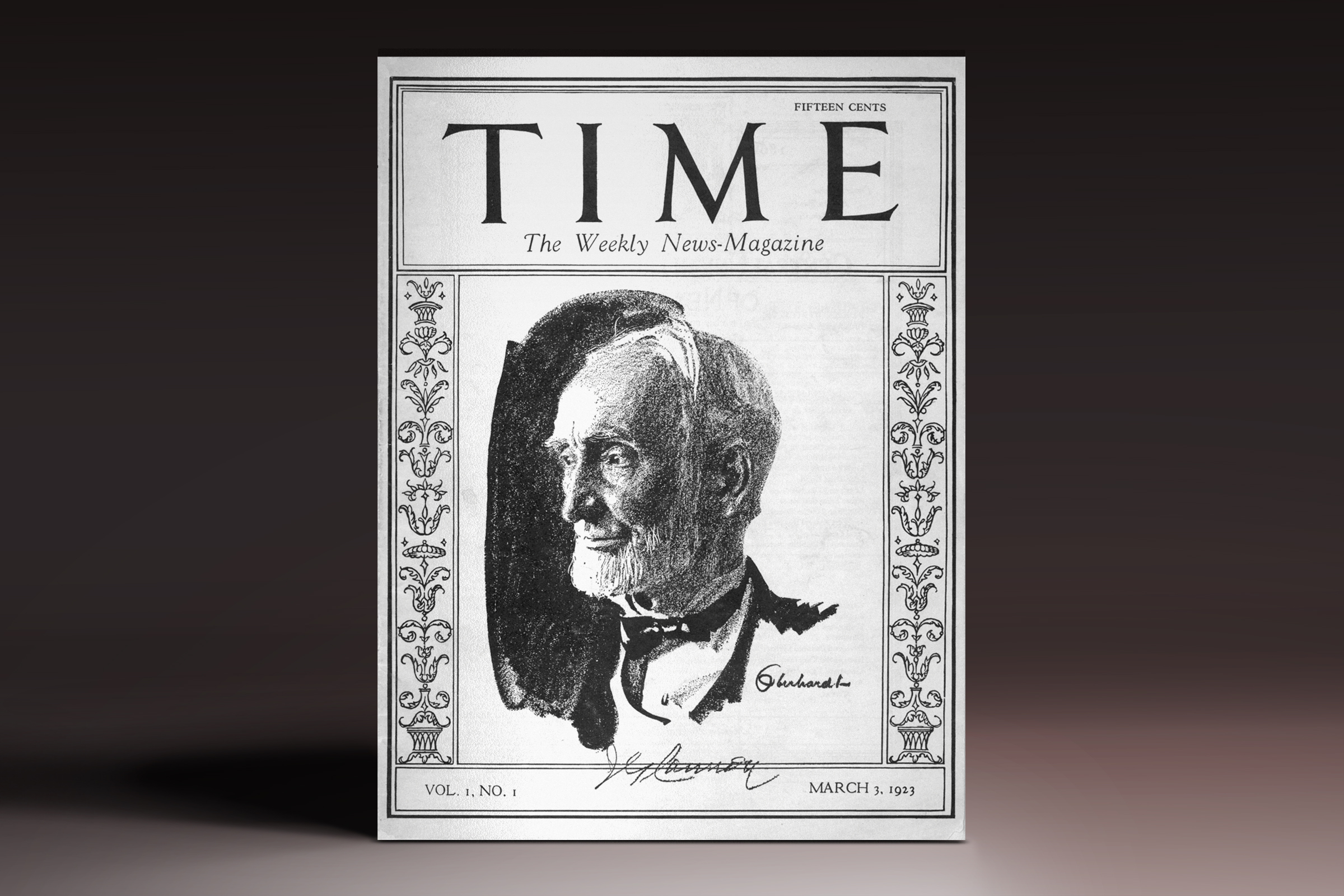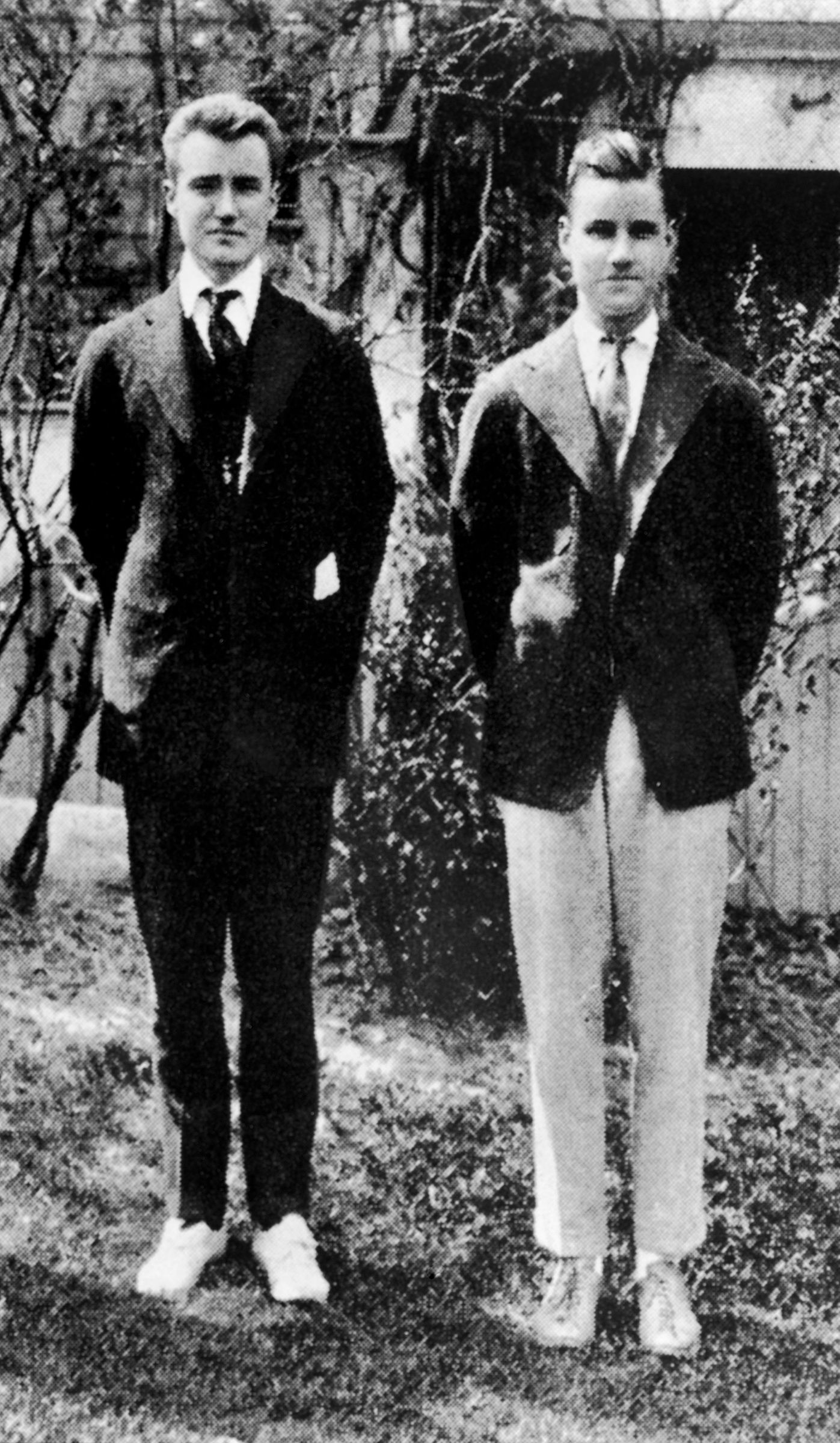
Buy a print of the Joseph G Cannon cover here
Henry Luce and Briton Hadden and their scrappy team of 20-somethings piled into a cab to barrel across town to the printing plant on the last Tuesday in February 1923. There they spent the final hours cutting, pasting, and fine-tuning the first issue of the magazine that would come to define the American Century. It was a skinny issue, stripped-down stories slotted into 22 sections, designed for an age of information overload, to be read in an hour—its unique value proposition signaled in its very name.
Read the First Issue in the TIME Vault and the cover story on TIME.com
The most important fact of this first cover is not the charcoal portrait or filigree border—it would be four years before a designer proposed the iconic red one. It was the name TIME (chosen over Facts), and even more, The Weekly News-Magazine. No such thing had existed before—no such artful, even arrogant, arrangement of all the world’s news into tidy categories. The “cover story” about the coming retirement of legendary GOP lawmaker “Uncle Joe” Cannon ran less than a column. From the first, this was news with attitude: “Never did a man employ the office of Speaker,” TIME declared of Cannon, “with less regard for its theoretical impartiality.”

The choice of Cannon for the cover spoke to Luce and Hadden’s conviction that people don’t just make news, they make history, destiny as personality, and so that week and every week to come for decades, it would almost always be a person or persons on the cover of TIME. Cannon had made plenty of news and history in his 46 years in Congress, eight as Speaker. A staunch conservative and fierce disciplinarian, he wielded total control over who sat on what committees and which bills would ever make it to a vote. “Sometimes in politics one must duel with skunks,” he once said, “but no one should be fool enough to allow skunks to choose the weapons.”
Gibbs, the first woman to be editor-in-chief of TIME, is the Edward R. Murrow Professor of Practice of Press, Politics and Public Policy at Harvard
More Must-Reads from TIME
- How Donald Trump Won
- The Best Inventions of 2024
- Why Sleep Is the Key to Living Longer
- Robert Zemeckis Just Wants to Move You
- How to Break 8 Toxic Communication Habits
- Nicola Coughlan Bet on Herself—And Won
- Why Vinegar Is So Good for You
- Meet TIME's Newest Class of Next Generation Leaders
Contact us at letters@time.com